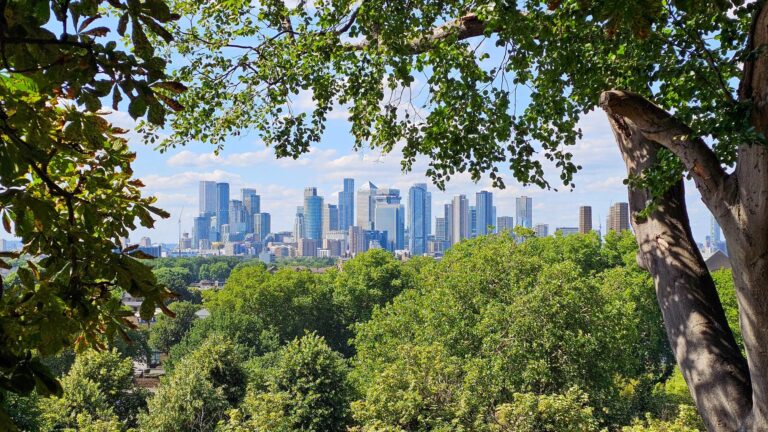In the run-up to COP26 the climate conversation has never been louder. This increasingly urgent issue is finally getting the global attention it desperately needs, and voices from all over the world are coming together to call for change.
And it comes not a moment too soon, as the IPCC’s latest climate report makes for a sobering read. The mammoth 4000-page document – the biggest and most comprehensive of its kind from the organisation since 2013 – makes clear the devastating impact mankind has had on the planet. It is, as the researchers say, a “code red for humanity”.
We can’t downplay these findings. The world is at a pivotal moment in time and urgent action needs to be taken now if we’re to avoid the worst impacts of climate change. And yet, the report offers a glimmer of hope.
While it now seems inevitable that we will reach the 1.5C temperature rise the 2015 Paris Climate Agreement sought to avoid, climate scientists are much more certain that if we get to Net Zero CO2, its contributions to further global warming are likely to stop. The report even suggests that temperature changes could slowly reverse, sparking cautious optimism that we could undo some of the damage already done to the environment.
In fact, the report lays out six Shared Socioeconomic Pathways (SSPs) – scenarios of climate outcomes based on particular socioeconomic global changes. While achieving SSP1, ‘Taking the Green Road’, is obviously the most desirable outcome, the report does note that achieving SSP2, ‘Middle of the Road’, would at least enable us to stabilise the climate.
This optimism – however guarded – is vital if we’re to continue making positive advances in tackling climate challenges. It’s easy to become mired in the doom and gloom of the climate narrative, but this line of thinking all too often leads to inaction, apathy and ‘what’s the point-ism?’ Optimism and hope, however, drives change.
And despite the seemingly unending stream of bleak headlines caused by the changing climate, there are reasons to be hopeful. Firstly, let’s consider the great changes that have taken place over the last decade. Governments have set in place ambitious targets to reduce carbon emissions in buildings, one of the largest contributors to GHG emissions, to help reach 2050 Net Zero targets. GHG emissions from agriculture across the EU has fallen by 20% since 1990 and the use of coal-fired power in the UK has been drastically reduced accounting for only 1.8% of the UK’s electricity mix, compared with 40% a decade ago We are clearly moving in the right direction.
These positive actions have helped spark an awareness of climate change, and the general population is more mindful of the climate conversation than ever before. Plus, a curious silver lining of the COVID-19 pandemic was that it catalysed a reappraisal of our natural environment, with large swathes of the population now determined to maintain the green behaviour they adopted during lockdown. And from this awareness comes purchase power, with consumers consistently favouring brands that demonstrate genuine sustainability credentials, and taking to social media to call out those that don’t. Businesses no longer view sustainability as a ‘nice to have’, but rather an integral part of their operations.
Laying the Foundations
In fact, throughout 2020 commitments to achieving Net Zero more than doubled across the board, including cities, businesses, universities and a significant number of the world’s biggest investors. By the end of 2020, 110 countries had committed to carbon neutrality by 2050, with China – traditionally a major environmental offender – pledging to follow suit by 2060. It’s true, a lot of policies do not get us to where we need to be, but they lay the foundation for further shifts.
Technology, meanwhile, has consistently been touted as a major weapon in our arsenal against climate change, and things here are happening rapidly. Electric vehicles, for example, are becoming more affordable and their infrastructure stronger and more resilient, with BloombergNEF predicting that by 2027 they’ll even be cheaper to produce than conventional fuel-powered cars.
Meanwhile, the Global Commission on the Economy and Climate estimates renewable energy alone is on track to create $26 trillion dollars of value by 2030, and financial think-tank Carbon Tracker has recently reported that current technology could produce 100 times as much electricity from solar and wind as current global demand, with the land required to produce this energy taking up less space than is currently given over to fossil fuels.
There is certainly a technological tipping point on the horizon, where the technology becomes so good that there’s no reason to use fossil fuels since it will be more expensive and less convenient than the alternative. When this tipping point will take place is unclear, but as long as we have hope and optimism driving innovation, that date edges ever closer. Don’t forget, nobody had a smartphone until suddenly everyone had a smartphone.
Reasons to be Cheerful
And there are many more pockets of positivity to be found. The UK has made huge progress in reforestation, they have beefed up the Right to Repair rules and a new ‘eco scores’ traffic light system for groceries is on the agenda to help further awareness among consumers.
Of course, hope is not linked to positive news stories – it’s linked to our own actions and willingness to roll up our sleeves. But our current reality – with doorstep recycling, cheap solar power, nations getting nearly 100% of their power from renewable sources and fossil fuel companies in sharp decline – would have seemed impossible even just 20 years ago. Which begs the question: where could we be in another 20 years if we continue to take action? Tackling these climate challenges needs significant infrastructural change and isn’t going to happen overnight. But it is happening.
We don’t absolutely know for sure what will eventually happen to the climate because the space between now and then is yet to be traversed, and that’s why we should remain optimistic. The solutions to mitigate climate change are already here. By focusing on achieving a brighter, cleaner and greener future – and keeping the conversation and action going – the more likely we are to get there.





